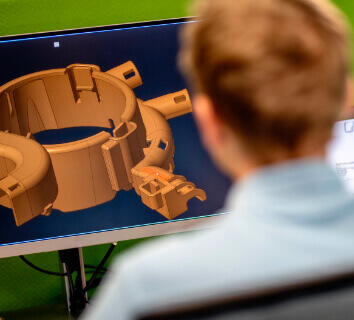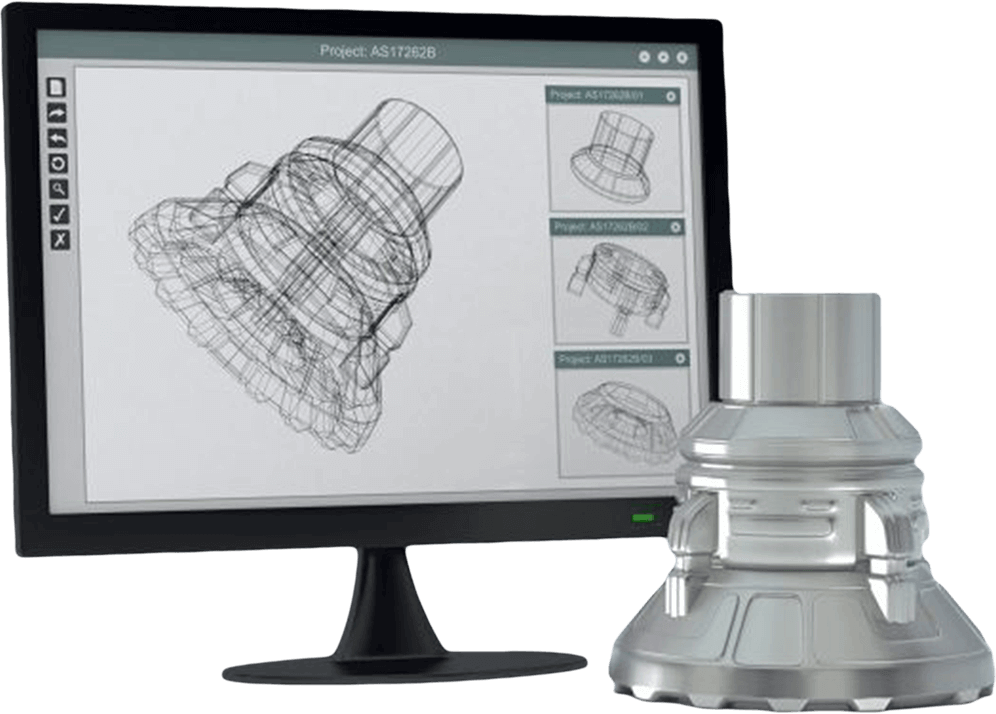Design for Manufacturing: Urethane Casting
Get a Quote
40+ years of experience

ITAR Registered

ISO9001: 2015 Certified
Design for Manufacturability (DFM) considerations for cast urethane parts are essential to ensure that these parts can be efficiently and cost-effectively produced while meeting quality standards. Cast urethane parts are typically made using a polyurethane casting process, such as liquid casting or open casting.

Here are some key DFM considerations for designing cast urethane parts:
- Material Selection:
- Choose the appropriate urethane material with the desired hardness, flexibility, chemical resistance, and durability for the specific application.
- Part Geometry:
- Keep part geometries simple and avoid overly complex shapes. Complex features can increase production time and costs.
- Use draft angles (typically 1-2 degrees) on vertical faces to facilitate easy release from molds.
- Wall Thickness:
- Maintain uniform wall thickness throughout the part.
- Consistent wall thickness aids in even curing and reduces the risk of defects like warping and bubbles.
- Avoid thick sections, which can lead to longer curing times and increased material usage.
- Ribs and Supports:
- Use ribs and supports judiciously to reinforce areas requiring additional strength without increasing overall wall thickness.
- Ensure proper spacing and design to prevent deformities and maintain uniform material flow.
- Undercuts and Complex Features:
- Minimize or eliminate complex undercuts and features that require intricate molds or additional manual labor to demold the part.
- Mold Design:
- Collaborate with mold designers and manufacturers to ensure that the mold design complements the part design for optimal production.
- Specify the type of mold (e.g., silicone, urethane, or epoxy) based on the part’s geometry and material requirements.
- Venting:
- Design parts with proper venting to allow air and gas to escape during the casting process. Adequate venting helps prevent defects like bubbles or voids.
- Tolerances:
- Specify tolerances for critical dimensions carefully. Tight tolerances can increase production costs and may not always be necessary for the part’s function.
- Surface Finish:
- Specify the required surface finish for cosmetic and functional purposes. Different mold surfaces or textures can be used to achieve the desired appearance.
- Assembly Features:
- Design parts with features that facilitate easy assembly, such as interlocking or snap-fit components
- Mold Release Agents:
- Consider the use of mold release agents to ensure smooth demolding and prevent damage to the part’s surface.
- Post-Casting Processes:
- Plan for any necessary post-casting processes, such as trimming, machining, or assembly, in the design phase.
- Testing and Prototyping:
- Prototype parts to test for manufacturability and functionality before committing to mass production.
- Use physical or virtual testing methods to validate the design’s performance under expected conditions.
- Communication with Urethane Casting Experts:
- Work closely with experts in urethane casting to ensure that your design aligns with best practices and can be efficiently produced.
By following these DFM considerations for cast urethane parts, you can enhance the manufacturability of your designs, reduce production costs, minimize defects, and improve the overall quality of the final components.
Collaboration with experienced urethane casting professionals and mold designers is crucial to achieving the best results.
